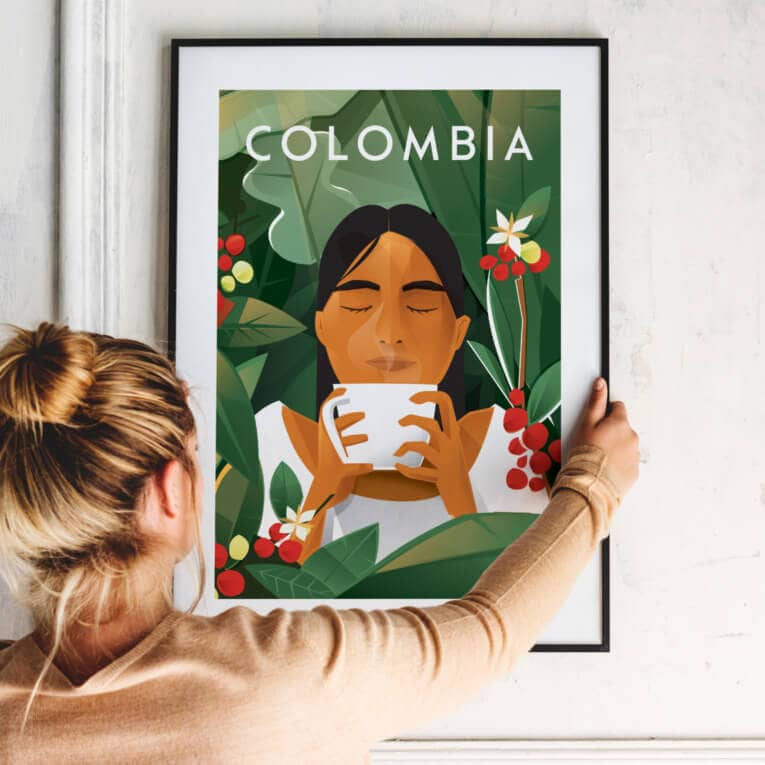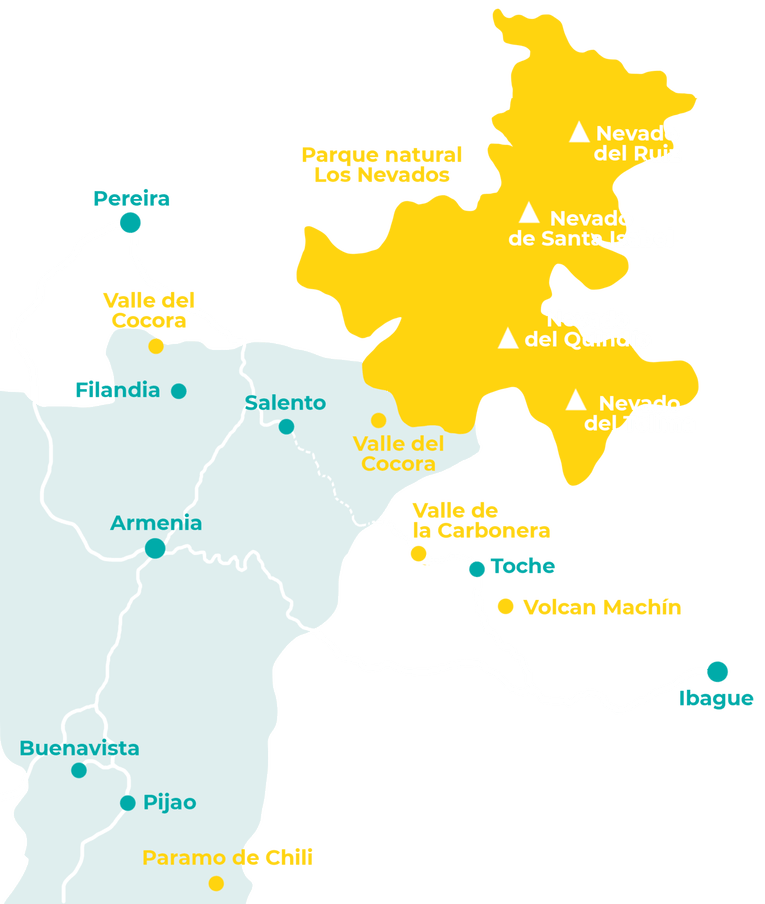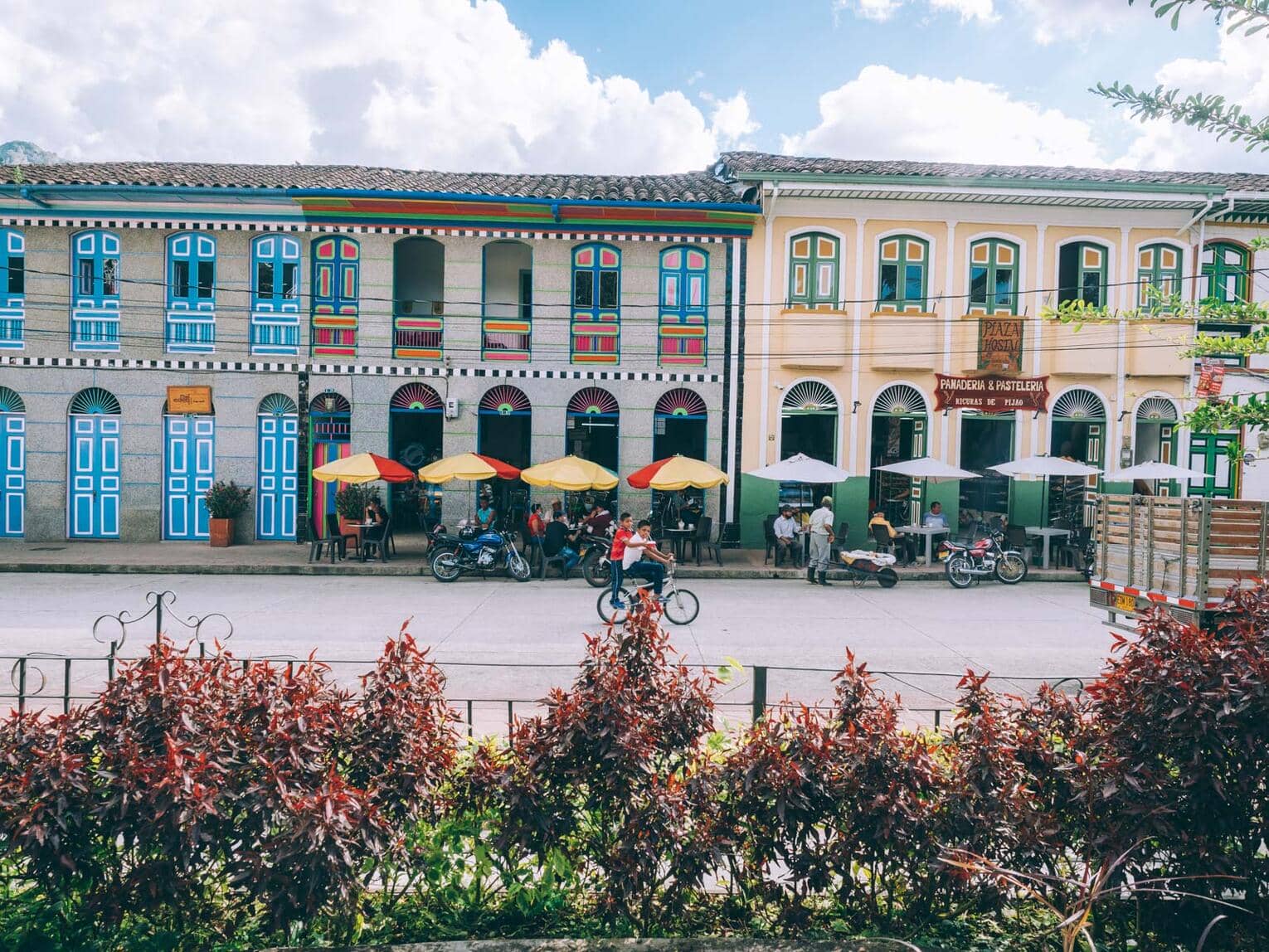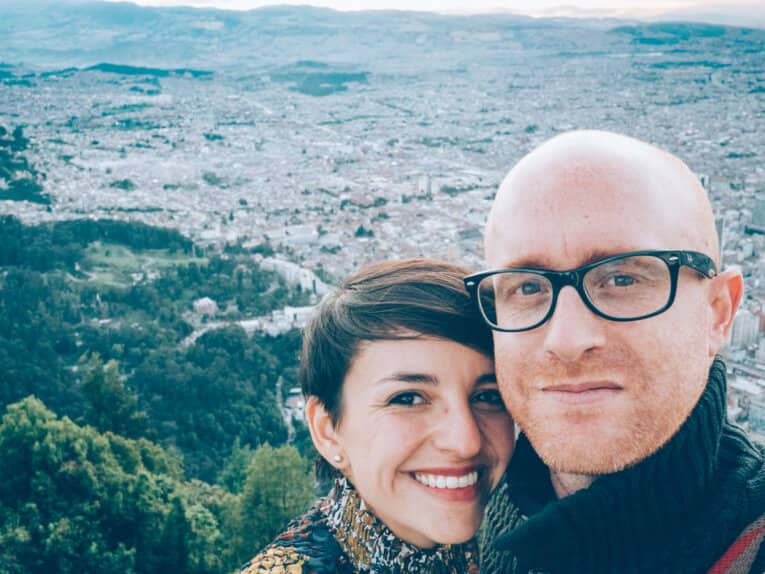In Colombia, as we keep telling you, you just have to want it to enjoy a landscape or village that is as beautiful, if not more so, than the most famous tourist spots. The village of Pijao, close to the famous Salento, is one of these far-from-the-radar destinations, but well worth the detour.
In this post, we tell you about our experience in Pijao, where we spent a few days during our last trip to Colombia. Pijao offered us the chance to meet many new people, enjoy the typical atmosphere of Colombia’s little-visited villages and discover some wonderful projects !
Contents
Related posts

Travel Poster “Café de Colombia”
Buy our beautiful prints to get a taste of Colombia at home
General information PIjao
- Founded: 1902
- Population: 6.130
- People: Pijaenses
- When to go: all year round
- Temperatures: 18° C avg.
- Climate: Temperate and humid
- Altitude: average 1650 m
- Region: Andes
- County: Quindio
- Distances: 33km from Armenia, 60km from Salento, 80km from Pereira

Disclaimer: we apologize in advance for any grammatical or syntactic errors, as our native language is not English (we're a Colombian-French couple), so we hope you'll forgive us and still enjoy the information we share with you! Please note that all the information on our blog is based on our own experience, and is checked and updated regularly.
Discovering Pijao and its history
What to do in Pijao

We arrive in Pijao in the late afternoon. The road from Armenia is magnificent. The village is located in a deep valley where the scenery is truly spectacular. It’s a real change of scenery from the gentle mountains of the area around Filandia.
What strikes you first is the authentic atmosphere of the village, with sunburnt faces and hard work in the fields. Here, most of the inhabitants work the land and the culture is authentically “campesina”.
We make our way to our accommodation, which we leave one night later. It’s a pity, the place was nice in an old colonial house, but the owner was rather unsympathetic. We’ve since learned that the hotel has closed. Karma when you hold us.
We spent the rest of our stay at Flora del Rio, a place we recommend 100 times over. Our fond memories of Pijao come in part from our meeting with Pablo and Melissa, the owners of Flora del Rio.
We’ll always remember their long evening chats, and hope they’re back in Canada where they went to see if the grass was greener (or not).







At Flora del Rio, we were lucky enough to be able to contemplate many birds, and we took a few nature walks in the surrounding area. Pijao has a lot to offer in this respect. We had a sensory experience on the trail that leads up into the forest from the river. And when the sun came out, we didn’t hesitate for a second to take a dip in the cold waters of the river!
We didn’t have time to climb up to the wax palm forest and the Paramo de Chili above Pijao, but we can’t recommend this rarely-visited experience enough.
We spent our few days visiting Pijao, strolling through the village streets to meet the locals. The atmosphere here is that of Colombian villages, where every casual conversation turns into a life story.
You’ll have to wander the narrow streets to see the colorful houses, eat a homemade ice cream, stop for a coffee, listen to old tango records and, above all, hear the stories of the village and its inhabitants.
Pijao is a martyred village. In the early 2000s, armed conflict invaded the village and its mountains, and the population lived in terror for ten years. Today, it’s a peaceful village, so much so that it’s been awarded the “slow village” label.
If we had to remember one thing about Pijao, it would be colors, encounters and life stories.
Pijao, which wanted to be a Slow village
What to do in Pijao, Quindio

When we arrived in Pijao, we had in mind to find out more about this famous“slow village” we’d heard about in posts about this unique project to have a Colombian village labeled by the worldwide“Cittaslow” network.
In our imagination, Pijao was a kind of model village where citizen initiatives were ahead of the rest of the country, where inhabitants and government officials had joined forces to develop another way of living locally.
In reality – and it’s always good to be confronted with it – Pijao is a village where, as is often the case, initiatives that are a little different are more or less supported by the population and local authorities, including the “slow” label project.






Above all, we’re going to discover a village that’s still in its original state, with an atmosphere typical of the villages of the coffee region, rooted in agricultural culture, large coffee fincas, day laborers and weekends spent drinking to the sound of the four discotheques in the main square.
Throughout our stay, we talked to the people, the pros, the cons, the supporters of the project like Monica Flores, a pioneer in the early days, when it was necessary to make people understand the notions of “slowing down” in a village where nobody had the impression of living at 100 an hour.
But in the end, whether the “Pijao Cittaslow” project has developed to the extent Monica would have liked or not, this initiative will have had the merit of moving part of the population and talking about the way Pijao wants to develop tourism.
Best things to do in Pijao
Visit Pijao in Colombia

Pijao is a village where you really should talk to people. Exchanges are easy here, and behind every door you’ll find unique life stories.
Wax Palm Forest
Here’s one of Pijao’s best-kept secrets: its wax palm forest! Yes, the same wax palms found in the Cocora, Carbonera and Samaria valleys.
Before the arrival of the Spanish colonists, the coffee region was covered with these palm forests, of which only a few traces remain in some places today. And Pijao is one of those places, less well-known than Cocora , where you can still admire these giant palm trees!
Paramo de Chili
Above Pijao lies a Paramo hidden at an altitude of over 3.700m, the Paramo de Chili, a little-visited spot where you can admire the famous frailejones and their fabulous ecosystem!
Hiking in Pijao
Two main agencies offer nature hikes in Pijao. These include Bio-onda, which specializes in bird-watching walks, and Ecotours, which offers day tours to the Paramo and the wax palm forest.
Bird watching
You don’t have to go far to discover the incredible diversity of bird species that can be admired in Pijao. This is true throughout the Quindio department, which is probably the place where we’ve had the chance to see the most birds in Colombia so far. If you get the chance, don’t hesitate to take a Bird Watching tour with an ornithologist guide. Always exciting!
Birdwatching in Colombia
Read our post on the best regions for birdwatching in Colombia.








Finca de café
There are various coffee tours in Pijao where you can visit a finca and discover the coffee production process “from plant to cup”. We didn’t do one in Pijao, as we went to Buenavista, a small village nearby.
Coffee tasting
La tienda del buen vivir
Cristina (Monica’s sister) runs this tiny store where she introduces visitors to Pijao coffees produced exclusively by women. Passionate about coffee, Cristina is an engaging character with lots of stories to tell.
La Floresta
Right next door is La Floresta, another coffee tasting place where you can drink the region’s finest vintages.
El Patio
A village nursery where Doña Ligia recovers medicinal plants. You can buy plants here, of course, but you can also sit on the terrace of the little café and taste Doña Ligia’s herbal teas. Herbal teas made from fruit and plants with many virtues, and we’ll be delighted to explain them to you!
Bar Social
All around the Plaza de Pijao, there are numerous cafés where you can have a drink, but only one has a century-old coffee machine! But it’s the atmosphere of the café, with its billiard tables (Colombia’s national sport), its old cash register and Fabio’s character, that’s worth the detour. A must-see place where locals come to drink coffee or tea in the late afternoon.
Bar Los recuerdos
A truly singular place in Pijao, a bar for nostalgic drunks that guards the memories accumulated by Gustavo Toro, a film buff with a passion for old LP s, which fill the walls of the back room! Today it’s Gustavo’s daughter who has taken up the torch, a little against her will, without really knowing what to do with this heritage and how to make it evolve.
El Porton
Alittle store that stands out in Pijao! A group of young people from the village, students “in the city”, have opened a designer boutique where you can find a variety of products by young local artists and designers.
So, if you ask yourself“what to do in Pijao“, you’ll find that there’s always something to do, and in addition to our recommendations, there’s sure to be plenty more to discover.
What to do around Pijao

Located just a few kilometers from Pijao, the village of Buenavista is also famous for its coffee. We went there to take Don Leo’s famous coffee tour. A rather unlikely encounter, in any case we didn’t expect to hear his life story, which is a bit of the point of this visit: the story of a coffee grower who became a cocalero out of necessity , and his crazy journey to become a coffee grower again.
In terms of coffee cultivation and production techniques, we’ve been on more exciting tours, particularly San Agustin. Here, the visit is most interesting for the meeting with Don Leo, a real character who has understood that his story can fascinate tourists.
But the story Don Leo tells us is the story of thousands of Colombian peasants who, to escape armed conflict or for economic reasons, have sometimes found themselves in the infernal spiral of illicit crops…







A day Tour in Pijao with a local guide
Where to stay in Pijao
If you decide to visit Pijao, we 100 th recommend staying at Flora del Rio, where we had a great time. The rooms are lovely, the atmosphere quiet, like a coffee finca, the river is nearby for a swim, and the village is close enough, just a 10-minute walk away.
Pijao, the best hotels

Finca
Flora del Rio
Double room : $100.000 to $150.000 COP/Double room : $150.000 to $200.000 COP
We loved our stay at Flora del rio! The bedding was just perfect, and the hosts were top-notch. Very good breakfasts with coffee from the finca. The hotel is right in the middle of nature and just a 10-minute walk from the village.
Restaurants in Pijao
The range of restaurants in Pijao is not huge, and mostly revolves around the “comida tipica”. We didn’t really have a favorite to recommend, apart from the cooks in the covered market.
Covered market
A sort of old-fashioned “food court”, typical of Colombian villages, where several village ladies offer a dish of the day at low prices. Homemade, traditional fare often based on a large soup with lots of things in it.
How to get to Pijao
From Armenia
Pijao is located in the department of Quindio, close to the city of Armenia. It’s easy to get to Pijao by bus or cab.
- Bus: from Armenia bus terminal
- Duration: 1h15
- Fare: $8.000 COP
From Pereira, Salento, Filandia or elsewhere
First find your own transport to Armenia. Then take the Armenia – Pijao bus.


